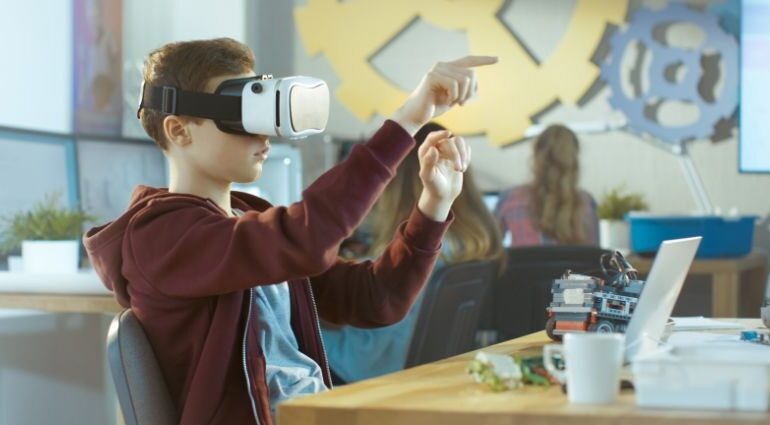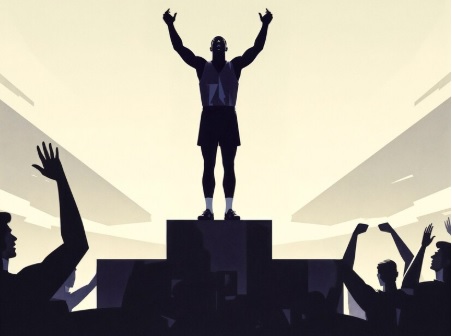How XR App Services Are Creating Immersive Experiences to Transform Industries and Enhance User Engagement

Imagine stepping into a virtual showroom where you can explore products as if they’re right in front of you, or collaborating with a colleague across the globe in a shared 3D workspace. This isn’t the future—it’s happening now, thanks to XR (Extended Reality) app services.
XR, an umbrella term for Virtual Reality (VR), Augmented Reality (AR), and Mixed Reality (MR), is revolutionizing how industries interact with customers, employees, and their environments. From retail to healthcare and beyond, XR apps are enabling immersive experiences that engage users like never before, transforming traditional processes into dynamic, interactive journeys.
In this blog, we’ll explore how XR app services are helping industries engage users in entirely new ways.
What Are XR Apps and How Do They Work?
Before diving into the specifics, it’s important to understand what XR apps are and why they’re gaining so much attention. XR, or Extended Reality, is a collective term that includes Virtual Reality (VR), Augmented Reality (AR), and Mixed Reality (MR). These technologies create immersive environments by blending the physical and digital worlds, allowing users to interact with virtual elements in real-time.
XR apps are software solutions designed to bring this technology to life. Whether it’s simulating a fully virtual world in VR, overlaying digital content onto the physical world with AR, or blending both in MR, XR apps are the key enablers. They use advanced hardware like VR headsets, AR glasses, and mobile devices, combined with powerful software frameworks, to deliver engaging and interactive experiences.
Now that we’ve set the stage, let’s explore how XR app services are being used across industries to redefine engagement and tackle real-world challenges.
How XR Apps Are Changing Industries
Now that we’ve established what XR apps are, let’s explore how they’re being used across industries. These applications aren’t just about flashy technology—they’re solving real problems and opening up new possibilities for businesses and users alike.
1. Retail and E-Commerce
Imagine trying on clothes virtually or seeing how a piece of furniture fits into your living room before you buy it. XR apps are making this possible, offering customers a seamless way to shop smarter. By creating virtual try-ons or product visualizations, retailers are not just improving sales but also reducing return rates.
2. Healthcare and Medical Training
In healthcare, XR apps are saving lives by helping doctors practice surgeries in a virtual environment before performing them on actual patients. Medical students can gain hands-on experience through simulated procedures, while patients can visualize their treatments, reducing anxiety.
3. Real Estate and Architecture
XR apps allow potential buyers to step into a property virtually, exploring every corner before construction even begins. Architects and builders use these tools to showcase designs, identify potential flaws, and collaborate with clients in real-time.
4. Education and Training
Learning becomes more engaging when students can interact with 3D environments. From historical recreations to science experiments, XR apps make learning fun and immersive. For workplace training, they provide a risk-free way to practice tasks like operating heavy machinery or managing emergency situations.
5. Manufacturing and Maintenance
In industries like manufacturing, XR apps guide workers through assembly lines or maintenance tasks with AR overlays. These tools improve accuracy, reduce downtime, and enhance safety in high-stakes environments.
As you can see, XR apps are more than just innovations—they’re tools that enhance efficiency and engagement in real-world scenarios.
Discover how Codewave is helping industries like yours innovate with tailored XR solutions.
Explore Your Industry Solutions
Let’s now take a closer look at the key features that make XR apps so impactful.
Key Features of XR Apps
What makes XR apps stand out isn’t just the immersive experiences they provide but the powerful features that drive their effectiveness. Let’s break down the key components that make XR apps a game-changer across industries:
1. Immersive Interactivity
XR apps allow users to engage with virtual objects in real-time, creating lifelike experiences. Whether it’s rotating a 3D product model or navigating through a virtual environment, the interactivity feels seamless and natural.
2. Cross-Device Compatibility
From smartphones and tablets to AR glasses and VR headsets, XR apps are designed to work across multiple devices. This ensures accessibility for users regardless of their hardware preferences.
3. Real-Time Data Integration
XR apps can integrate live data feeds, allowing users to interact with real-time information. For example, an AR app in manufacturing can display current equipment status and alert users to potential issues.
4. Intuitive User Interfaces
The best XR apps are designed with user-friendliness in mind, ensuring that anyone can navigate and interact with them without extensive training.
5. Multi-User Collaboration
Many XR apps enable collaborative experiences, allowing users in different locations to interact within the same virtual space. This is especially valuable for training, design reviews, and remote work scenarios.
6. Scalability and Customization
XR apps can be tailored to specific business needs and scaled as your operations grow. Whether it’s creating a virtual storefront or a detailed simulation for training, the customization options are endless.
These features make XR apps not just engaging but also practical for solving real-world problems.
Now that we’ve seen the features of XR apps, let’s take a closer look at the value they bring to businesses. Beyond being innovative, XR apps solve real-world challenges and deliver measurable benefits.
Benefits of XR App Services with Real-World Examples
XR app services deliver practical advantages that go beyond the wow factor. Let’s look at some benefits paired with real-world examples:
1. Enhanced Customer Engagement
XR apps allow businesses to create memorable experiences that captivate customers.
- Example: A furniture retailer uses an AR app that lets customers visualize how a sofa or table would look in their home before purchasing. This reduces return rates and boosts customer confidence.
2. Improved Decision-Making
Simulations and visualizations help users make better choices.
- Example: Real estate companies provide virtual property tours through VR, enabling buyers to explore multiple properties remotely, saving time and increasing convenience.
3. Cost Savings on Training and Prototyping
Businesses can reduce expenses by replacing physical setups with virtual ones.
- Example: An aviation company trains pilots using VR simulators instead of costly, large-scale setups. This provides realistic practice scenarios without the risks.
4. Increased Efficiency
XR simplifies complex processes, saving time and resources.
- Example: In manufacturing, workers use AR headsets to view step-by-step instructions overlaid on machinery, reducing assembly errors and speeding up production.
5. Better Customer Experience
Interactive and personalized services foster loyalty.
- Example: A beauty brand offers a virtual try-on app, allowing users to test different shades of makeup in real-time, enhancing customer satisfaction.
6. Competitive Advantage
Innovative XR solutions give businesses an edge.
- Example: An automotive company showcases its latest car models through immersive VR experiences at trade shows, drawing more attention than static displays.
These examples highlight how XR apps are not just transforming industries but also delivering measurable results.
Conclusion
The XR market—spanning AR, VR, and MR—is booming as tech giants like Apple and Meta lead the charge. Industries from healthcare to entertainment are unlocking new possibilities with immersive experiences and smarter tools.
Not sure how XR can fit your business needs? Codewave specializes in crafting XR solutions that don’t just impress—they solve real challenges. With 10+ years of design thinking and technical expertise, they help businesses like yours turn ideas into impactful, user-focused applications.












